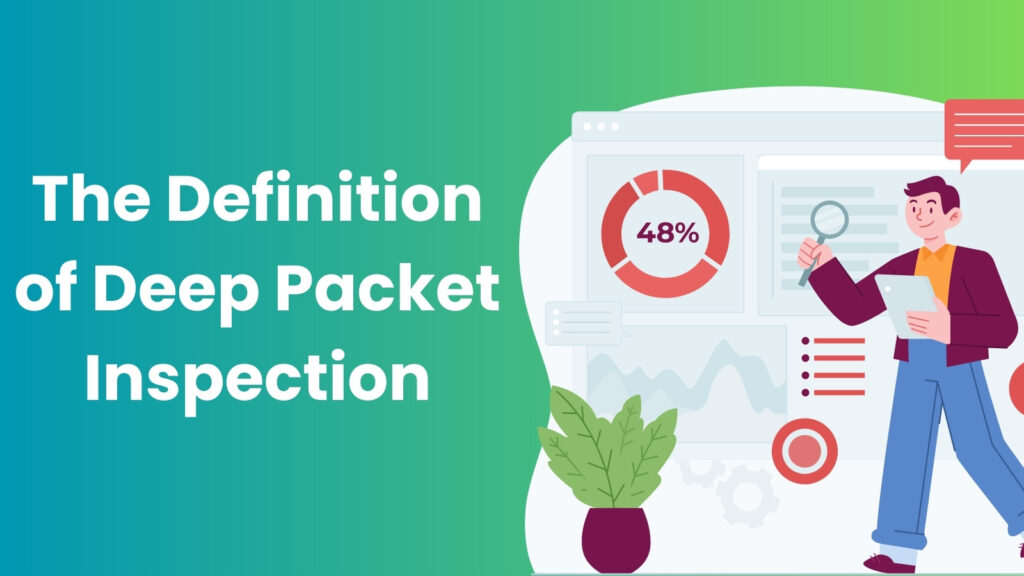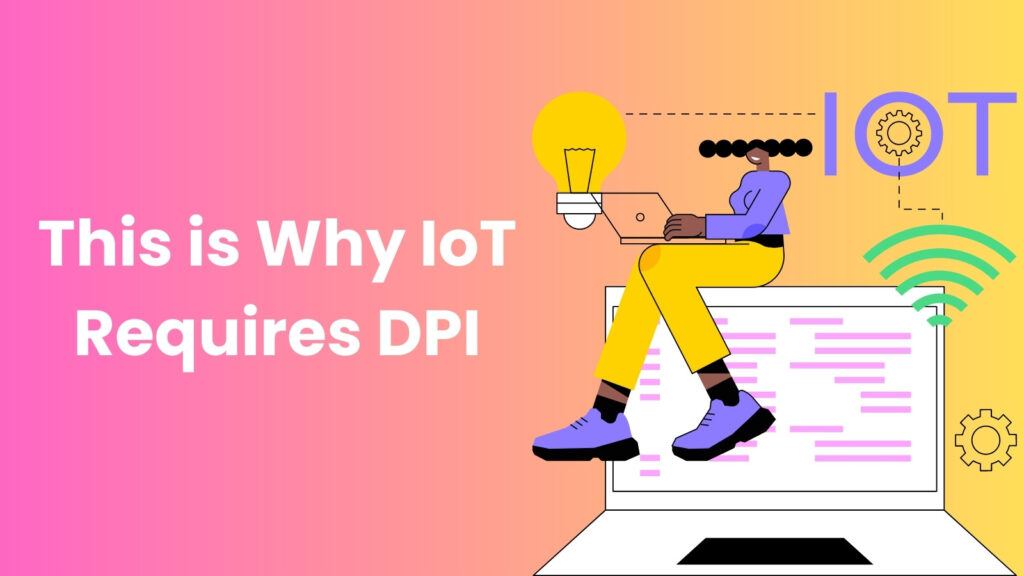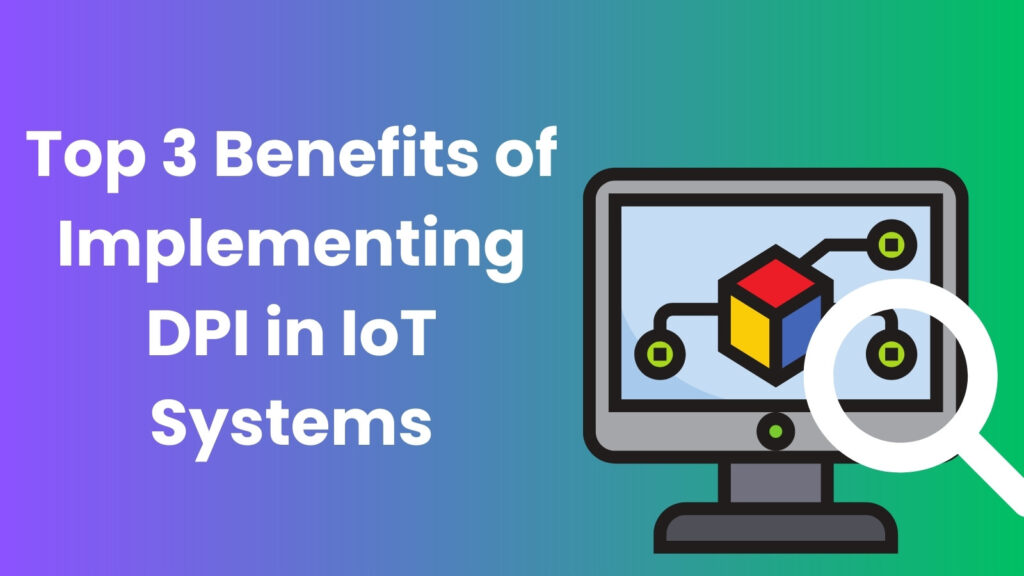As the Internet of Things (IoT) ecosystem expands swiftly, Deep Packet Inspection or DPI, has become a vital technology with significant implications. As billions of IoT devices connect and communicate, DPI is essential for understanding, monitoring, and analysing the data traffic pouring across these connected networks.
In this article, we will explore how it is involved in the smooth functioning of IoT, the requirements, and the benefits of implementing DPI in IoT.
The Definition of Deep Packet Inspection

It is a sophisticated method of network analysis that entails looking over and examining the information contained in data packets as they move across a network. DPI digs deep into each packet’s content to gain useful insights from the data being carried, as opposed to classical packet inspection, which concentrates on header information. It can detect certain apps, protocols, and even particular user behaviour by looking at the entire material.
If put in simple words, this can spot security issues, give traffic priority, improve network speed, and make sure that various policies are being followed due to this degree of analysis. DPI is a crucial technology in contemporary networks because it gives network administrators and security experts vital data that they can utilise to analyse and regulate the data flow with unparalleled accuracy and complexity.
This is Why IoT Requires DPI

Taking Control of Complex Data Traffic
IoT has quickly expanded, creating a huge network of linked devices that produce a significant amount of data flow. IoT requires DPI because controlling this sophisticated data flow has become a major issue. It is essential for comprehending and deciphering the complex data flows within IoT networks.
DPI can detect specific initiatives, protocols, and user behaviour by looking at the content of each data packet, which enables effective traffic control. Latter can prioritise crucial data, manage bandwidth allotment, and guarantee uninterrupted data transfer for a variety of IoT applications due to this sophisticated analysis. IoT networks must use DPI if they are to handle the complexity of data flow and preserve network performance as the number of connected devices increases.
Detecting and Improving Threats and Security
In IoT contexts, DPI is essential for improving security and threat detection. It can spot possible security issues and malicious activity by scanning the contents of data packets in real time. IoT networks are protected against cyber-attacks and data breaches due to their ability to identify suspicious patterns, illegal access attempts, and aberrant activities.
It gives security administrators the ability to enact access limits, keep an eye out for flaws, and quickly react to any new threats. The defensive mechanisms of IoT systems are strengthened by DPI’s capacity to probe into the depths of data flow, protecting the confidentiality, integrity, and availability of crucial data and infrastructure.
Assuring Service Quality
To provide seamless user experiences in the dynamic world of the IoT, a constant and dependable Quality of Service, or QoS, must be established. It becomes clear that DPI is essential to achieve this objective. This provides intelligent traffic prioritisation and bandwidth distribution by examining data packets and determining the type of traffic.
As a result, mission-critical applications and services will always have the resources they require for the best possible performance and responsiveness. Data flow over IoT networks is optimised with the help of DPI, which assists in locating and addressing any possible bottlenecks or slowdown areas. IoT systems can achieve constant QoS levels, improve user satisfaction, and preserve efficiency in a varied and connected environment with the help of its ability to precisely monitor and regulate data flow.
Enabling Traffic Prioritisation and Bandwidth Allocation
When imposing IoT generation, managing numerous facts traffic and allocating bandwidth efficiently are essential for top-quality community performance. DPI proves crucial in this undertaking. By scrutinising the contents of records packets, it can identify and prioritise specific applications, offerings, or tools based totally on their importance and criticality.
This visitor prioritisation allows seamless statistics flow for assignment-important IoT programs, ensuring their easy operation even throughout peak times. DPI also allows green bandwidth allocation, preventing useful resource contention and bottlenecks. With DPI’s granular management over information visitors, IoT systems can allocate bandwidth dynamically, optimising community resources, and handing over a dependable and responsive user enjoyment across the interconnected IoT landscape.
Improving Network Efficiency
For the IoT ecosystem to accommodate the growing amount of connected devices and data traffic, networks must operate at high network efficiency. In IoT contexts, DPI is crucial for enhancing network effectiveness. DPI can detect the kind of traffic and provide priority to crucial applications by performing fine-grained data analysis on data packets, which optimises data flow and lowers latency. Data transmission efficiency and improved resource allocation are made possible by DPI’s capacity to identify and reduce potential congestion sites.
As a result of this, network downtime is decreased, data throughput is increased, and overall network performance is boosted. Adopting DPI enables IoT systems to handle the increasing demands, guaranteeing a seamless and dependable user experience in the IoT landscape’s diversity and connectivity.
Top 3 Benefits of Implementing DPI in IoT Systems

Filling Gaps in Security
Strong security measures are necessary since the possible vulnerabilities are growing along with the IoT environment. DPI technology improves network security by carefully reviewing data packets in real-time, spotting dangers, and stopping malicious activity before it can take advantage of weaknesses.
It can identify malware, unauthorised access attempts, and other suspicious activity that conventional security measures can overlook by examining the content and structure of data packets. This proactive strategy ensures a safer and more secure IoT environment for businesses and consumers alike by helping to preserve sensitive information, prevent data breaches, and protect IoT devices from cyber-attacks.
Network Performance Improvement
Network performance is enhanced by DPI in IoT systems, which is a significant benefit for linked settings. It allows for accurate prioritising of traffic by closely examining data packets, which optimises bandwidth use and lowers latency. IoT devices can transmit and receive data more effectively because of this increased visibility, which improves data flows and the responsiveness of the network as a whole.
Also, IT contributes to strengthening the IoT ecosystem by assisting in the detection and mitigation of possible security risks. DPI’s integration is essential for applying the potential of IoT networks while assuring smooth and safe operations due to its capacity to speed up data processing and strengthen cybersecurity measures.
Analysing and observing traffic accurately
Latter provides reliable detection of network patterns and device activity by carefully inspecting data packets, and providing real-time insights into data use and communication patterns. Administrators can now manage network resources, quickly spot abnormalities, and proactively deal with possible problems due to this improved insight.
Due to the effective and dependable traffic control provided by DPI in IoT settings, businesses can retain top performance and increased security in their linked networks.
Streamline Your IoT-driven Operations with DPI

As we have mentioned above, DPI’s functioning is an essential part when it comes to the whole processing of IoI. From understanding, processing to analysing and monitoring data packets will make the internet users and operators have a smoother IoT functioning as a result. What we need to remind you is it is always important to do your research before opting for any of these technologies as you are required to find the best suit to your business operational requirements.







